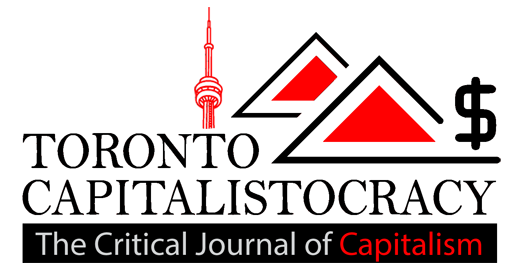Business
CRTCBbroadband Internet Ruling Still Leaves Room for High Prices

The Canadian telecom regulator’s declaration Wednesday that high-speed Internet is a basic service entitlement like a home phone continues to draw applause, but some observers say the underling problem remains — Canadians still pay some of the highest Internet prices in the developed world.
“This does not address affordability; it addresses access,” Stuart Jack, head of the telecom practice at Nordicity Group Ltd., said of the Canadian Radio-television and Telecommunications Commission’s announcement.
The consulting firm was commissioned by the CRTC to prepare a 2016 international comparison on home telephone and wireless Internet prices that was published in August.
The Nordicity report found broadband Internet prices in Canada in the middle of the pack of a sub-group of eight advanced countries when looking at lower and mid-tier performance.
But Canada had the second-most expensive prices — behind only the U.S. — for the top download speeds that the CRTC said should be available to residents in all areas of the country.
In remote communities such as the Matawa First Nations in northwestern Ontario, residents are paying far more. Matawa economic development manager Jason Rasevych said residents are paying as much as $200 per month for satellite dishes to access the web because broadband service is so poor.
He said the only way the CRTC’s ruling could promote affordability is if it puts pressure on the federal government to partner with Ontario to bring advanced fibre networks to the community. Jack cited a lack of competition as a reason for comparatively high-cost Internet services, along with low population density and expansive geography.
The CRTC, in its ruling Wednesday, said that high-speed access is a basic telecom service objective, and also mandated that carriers must contribute to a $750-million fund that will be drawn on over five years to expand networks into rural and remote communities.
The CRTC said all residents should have access to Internet infrastructure to provide health and other services, and to promote economic development, but stopped short of regulating prices, as some groups have recommended.
ACORN Canada, a national organization of low- and moderate-income families, for example, has asked the CRTC to mandate a $10-per-month high-speed home Internet product for families and individuals living below Statistics Canada’s low-income measure.
Lack of access to the Internet excludes low-income Canadians from equal opportunities to education, employment, government services and modern civic participation, ACORN Toronto spokesperson Alejandra Ruiz Vargas said.
“It leads to social isolation, because you can’t connect with your friends and relatives,” she told the Star. “And it leads to poverty because you can’t look for jobs or fill out job applications.”
A survey of almost 400 ACORN members showed 83.5 per cent felt Internet service is “extremely expensive.” Of those, almost 59 per cent said they skimped on other budget items to pay for Internet service because they need it.
But Jack of Nordicity said a cap on Internet prices would send the wrong signal, discouraging a new category of competitors that could be lured to offer Internet services in Canada — a market where data is being consumed in mounting volumes to stream video content from on-demand providers such as Netflix.
TekSavvy, a telecom reseller that is lowering Internet prices for 300,000 customers thanks to a CRTC ruling that slashed the prices incumbents charge for wholesale network access, said Internet price caps would be a competition killer.
“Our pockets aren’t deep enough to roll out below-cost broadband,” TekSavvy CEO Marc Gaudrault said. “Instead of focusing on heavily subsidized plans for the few, we need a framework that can achieve affordable high-speed Internet for anyone who wants it.”
And while he lauded companies such as Rogers and Telus for offering monthly Internet plans for about $10 to certain low-income households, he said the packages are below costs and could not be offered by smaller rivals.
Instead, he said TekSavvy is relying on longer-term wholesale rates that accurately reflect the cost of providing services that establish a foundation for more competition and price moderation down the road.
CRTC chairperson Jean-Pierre Blais said Wednesday that the commission will rely on market forces to control Internet prices and has taken steps to encourage a wholesale market that can sustain new competition.
Blais also noted that Innovation Minister Navdeep Bains is looking at the issue. “Right now, we’re giving a chance to Minister Bains and others to fill that affordability gap.”
Business
Beauty Week is back at Hudson’s Bay in Toronto and it’s time to get glam

Beauty enthusiasts rejoice! Beauty Week at Hudson’s Bay is back in Toronto for another year. It’s time to stock up on all of your fall essentials and, maybe discover some new ones.
From Friday, August 18 to Sunday, August 27, you can expect a truly elevated beauty experience in-store with incredible special offers, limited-time gifts, and exciting activations.
If you’re a diehard beauty lover, you’ll already know that Hudson’s Bay is the place to shop thanks to its extensive range of over 195 skin and makeup brands from both luxury labels and masstige brands — including Tata Harper, Estée Lauder, YSL, Nars Cosmetics, Bobbi Brown, and so much more.
Throughout The Bay’s Beauty Week, visitors can take in some at-counter activations and interactive expert-led tutorials, where there will be chances to get makeup touch-ups from top-tier brands, try a spritz of the most alluring fragrances, and sample tons of new products.
This year’s Beauty Week highlight is the ‘Best in Beauty’ tote, a meticulously-curated selection of 30 deluxe samples from an array of top-tier brands like Dr. Barbara Sturm and Shiseido spanning skincare, fragrance, and makeup — all in a super sleek bag.
The tote, which is valued at over $300, is retailing for just $39 and is a fantastic way to explore new products (without breaking the bank). However, there is a limited quantity, so if you want to get your hands on one, you’ll need to be fast.
Wondering exactly what Beauty Week’s free gifts with purchases entail? If you spend over $95 at Lancôme, you will receive a six-piece set valued at $130. Or, you can get an Estée Lauder gift valued at $170 with purchases over $80. (And that’s just to name a few.)
If you’re a Hudson’s Bay Rewards member, you’ll also get $20 in Hudson’s Bay rewards when you spend over $100 on beauty.

Business
The Canadian Armed Forces are hiring for several non-combat military jobs

The Canadian Armed Forces (CAF) have several non-combat jobs, some of which do not require a college degree or past work experience.
Life in the forces has several benefits, such as paid education plans (college, university and graduate-level programs), 20 paid vacation days, health and dental coverage for you and your family, maternity and paternal leave, and pension plans. You can learn more about the benefits in detail here.
And to make it easier to gauge if you qualify, the listings also include related civilian jobs to see if it’s your ideal role.
Financial services administrator
Related civilian jobs: Financial records entry clerk, financial manager, accounting technician, bookkeeper, budget officer, cashier clerk, business planner technician, and verification manager.
Description: You’ll help budget resources for all military activities besides providing financial assistance.
Education: You need to have completed Grade 10.
Duties: As a financial services administrator, you’ll be responsible for bookkeeping and managing budgets. You’ll also provide support in accounts payable and accounts receivable.
Work environment: Those in this role work at CAF bases, on ships or overseas. You might also be expected to help special operation units, recruiting offices, schools, and medical organizations.
Postal clerk
Related civilian jobs: Mail clerk, mail sorter.
Description: You’ll provide postal services to members and their families at bases and establishments.
Education: Grade 10. No previous work experience or related career skills are required.
Duties: As the postal clerk, you’ll handle mail duties.
Work environment: Besides a postal office, you may work on a ship or a mobile postal van. You might be expected to serve with Royal Canadian Navy, the Army, and the Royal Canadian Air Force in Canada and abroad.
Dental technician
Related civilian jobs: Dental assistant, dental hygienist.
Description: You’ll be helping dental officers provide dental services to CAF members, their families, and dependents.
Education: Level II dental assisting diploma from an accredited college or a National Dental Assisting Examining Board (NDAEB) certificate.
Duties: Those in this role will be responsible for various responsibilities, including disinfection and sterilization of dental equipment, applying rubber dams, placing cavity liners, and controlling bleeding. In addition, you’ll assist in laboratory procedures like creating casts, custom trays, and mouthguards.
Work environment: This role will require you to work in a military dental clinic, a Mobile Dental Clinic, an Air Transportable Dental System, or onboard a ship. You might be expected to work on a base in Canada or other operations in other parts of the world.
Human resources administrator
Related civilian jobs: Records administrator, data entry supervisor, receptionist, office manager, executive assistant, payroll clerk, and information management technician.
Description: Provide administrative and general human resources support.
Education: Grade 10. No previous work experience or related career skills are required.
Duties: In addition to human resources administration and services, you’ll be handling pay and allowances, managing automated pay systems, and maintaining personnel records.
Work environment: HR administrators work at all CAF bases in Canada. They also work on ships and overseas to support the Canadian Army, Royal Canadian Navy, or Royal Canadian Air Force operations.
Medical assistant
Related civilian jobs: Emergency medical responder, ambulance and first aid attendant, registered nursing assistant, licensed practical nurse, and hospital orderly.
Description: Successful candidates will help treat the sick and injured in CAF units. You’ll be assisting and supporting nursing and medical officers.
Education: Minimum of Grade 11 biology, Grade 10 physics or chemistry, and Grade 10 math.
Duties: You’ll provide initial care and essential life support treatments in trauma cases. You’ll help with health assessments (hearing and vision tests, perform basic lab procedures, etc.) and initiate and manage medical records and reports. You’ll also be expected to provide support and first aid during training exercises.
Work environment: Medical assistants may serve with the Royal Canadian Navy, the Royal Canadian Air Force or the Canadian Army as part of the Canadian Forces Health Services Group. Those in this role are exposed to the same risks as the forces they support.

Business
Porter’s new loyalty program promises to match Air Canada’s Aeroplan status

Porter Airlines is once again stirring the pot among Canadian airline rivals, now going after Air Canada’s Aeroplan members by offering to match their loyalty status to an equivalent of their own.
The beloved airline, which recently ranked as having the best cabin service in North America, challenged the competition for the second time this year, after previously deploying a similar tactic against WestJet in the spring.
Earlier in April, Porter presented customers with a limited-time offer to match the loyalty status of WestJet’s patrons with VIPorter levels.
Now, they’re offering Aeroplan members to seamlessly transition to an equivalent VIPorter Avid Traveller status based on their existing membership tier.
Members can then take advantage of an array of travel perks that come with flying Porter, including seat selection, baggage, and flight changes.
For those currently holding an Aeroplan membership, there are two ways to acquire the Avid Traveller status for the rest of 2023:
Status-Based Match:
- Aeroplan 25K members = VIPorter Venture
- Aeroplan 35K members = VIPorter Ascent
- Aeroplan 50K, 75K, and Super Elite = VIPorter First
Flight Segments-Based Match:
- 5 flight segments = VIPorter Passport
- 8 segments = VIPorter Venture
- 17 segments = VIPorter Ascent
- 28 or more segments = VIPorter First
Members will have to first submit their applications on Porter’s website. Registration will remain open until September 6, 2023.
In order to maintain their membership level through 2024, customers will have until the end of 2023 to reach the following reduced qualifying spend (QS) targets:
- Passport = $500 in QS
- Venture = $750 in QS
- Ascent = $1500 in QS
- First = $2500 in QS
Over the past year, Porter has launched an aggressive expansion strategy, including everything from introducing longer flights on newly-purchased jet planes flying out of Toronto Pearson, free WiFi, and a new all-inclusive economy experience.
With Canadians losing both Swoop and Sunwing as WestJet incorporates both into their mainline business, Porter’s direct competition is welcome to keep prices competitive.




